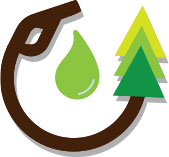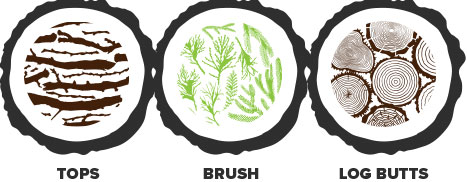What is RD?
Cleaner, better fuel for the future – from trees!
Renewable Diesel or RD is manufactured from 100% renewable feedstocks. It is an ultra-clean burning, petroleum-free replacement fuel for diesel engines. RD is a low-carbon, sulphur-free diesel that has an identical chemical structure to regular fossil diesel delivering the same power, torque and towing capacity.
Beneficial properties
- Carbon Intensity of RD is 97% lower than fossil fuel
- Reduces particulate matter by 33%
- Reduces Nitrogen Oxides (NOx) by 9%
- Reduces Carbon Monoxide (CO) by 24%
- Reduces Hydrocarbons (HC) by 30%
- High Cetane number (70-90) – promotes early ignition
- Low Cloud Point – makes RD more efficient in low temperatures
- Meets ASTM D975 standards and Canadian equivalent
- Satisfies manufacturer fuel requirements – does not void engine warranties
RD is a ‘Drop-in Fuel’ – Just say fill ‘er up!
RD is fully-refined into a pure, paraffinic hydrocarbon that is chemically identical to fossil petroleum diesel, yet is odourless, colourless, and free of oxygen or sulphur. Therefore, RD is a ‘drop-in fuel’, meaning users can pump it directly into diesel engines – without worrying about engine damage – and hit the road with similar power, torque and towing capacity.
Numerous problems - one simple solution
By utilizing forestry wood waste to produce Renewable Diesel, eco-Options is not only putting disposed product to excellent use, we are helping to mitigate the severity of wildfires, creating jobs and new economic opportunities that benefit local communities and First Nations, and offering commercial truckers a drop-in fuel that can help them save money and contribute to a cleaner environment.
eco-Options RD is made from forestry wood waste
eco-Options Energy uses one particular renewable feedstock: Forestry Wood Waste. We make our Renewable Diesel from tree tops, brush and log butts that are literally lying around – creating a new market in the forestry industry.
One of BC’s largest industries is forestry. However, anywhere from 20% to 50% of the bio-mass in a Foresters’ Allowable Annual Cut (AAC) is considered non-merchantable waste and ends up in piles in the forest or in sawmills and dry land sorts.
The majority of bottoms, tops and slash from primary logging or from thinning and pruning are defined as forest residuals and are piled and burned every year. This means a large proportion of the wood resources are unused and basically disposed of. Furthermore, burn piles are a significant source of fuel contributing to wildfires of higher intensity.


